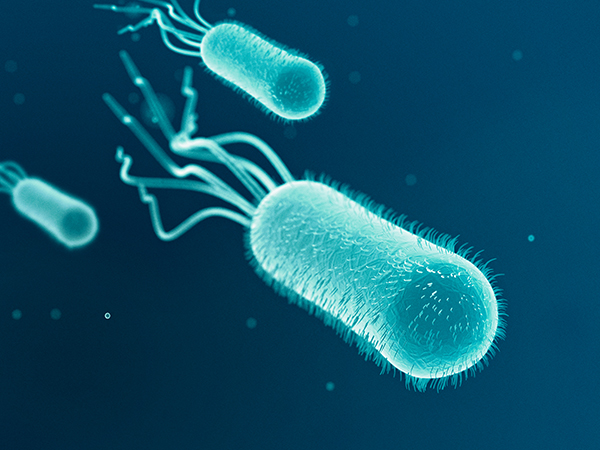PURE OZONE – SMART HEALTHCARE SYSTEM O3M
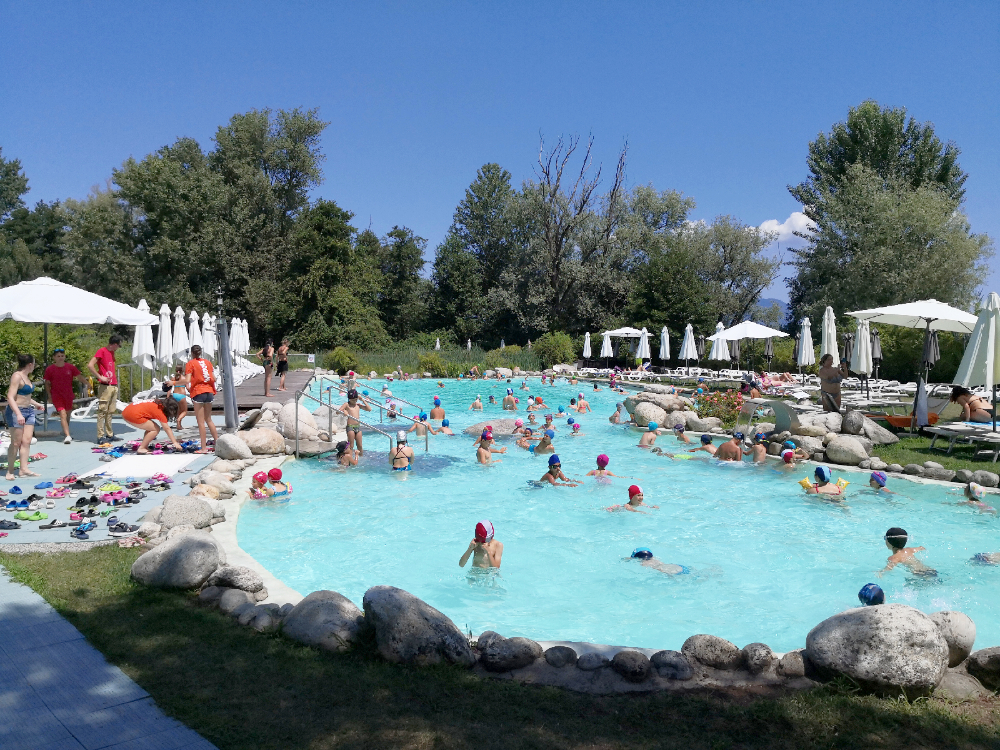
The pool water is a living environment that changes day after day depending on its temperature, the frequency of baths, the various beauty products used by swimmers, etc., and keeping it efficient, clear and healthy can become a real challenge!
Here are the most important points to respect for a beautiful and healthy pool throughout the season.
1. THE FILTRATION SYSTEM:
The water in the swimming pool must be kept in constant movement and must absolutely not stagnate, for this reason the swimming pools are equipped with a filtration system consisting of a pump and a sand, cartridge or diatomaceous earth filter, the filtering system provides more than 2/3 of the pool water maintenance.
But how does it work? The water in the tank is sucked by the pump, passes through the skimmers that retain leaves and debris, before entering the pump it is filtered again, then passes through the filtering system which in turn blocks the finest impurities and once cleaned, it is reintroduced into the tank through the inlet nozzles.
How to define the correct flow rate of the pump for pool filtration?
To choose the pump suitable for the volume of water in the pool, it must be taken into account that its flow rate must be able to allow the recirculation and filtration of the total volume of the pool in 3 hours, let’s give an example: For a pool of 50 m3 = 50/3 the result is a pump with a flow rate of no less than 16,7 m3/h.
How to define the correct size of the filter?
Determine the size of the pool (surface only, not the water inside): If the pool is rectangular or square: measure length / width and multiply to get the area (A) (A = Length * Width) . While if the pool is round, measure the distance between two opposite sides of the pool and multiply it by itself, then multiply the result by 3,14 (A = r2 * 3,14).
Determine the volume of the pool: Obtain the volume (V) of the pool with this formula: V = surface * average depth. Furthermore, if it is a rectangular swimming pool, multiply the figure by 7,5 (V * 7,5); While if it is a round pool, multiply by 5,9 (V * 5,9).
Attention! The filter must have the correct dimensions and characteristics: If undersized, it does not do its filtering job, it simply cannot handle the number of unwanted contaminants present, requiring more maintenance much more frequently than desired. If oversized it becomes not very functional, simply the pump, not finding sufficient friction induced by the internal volume, moves the water too quickly through the filtering bed which consequently loses its effectiveness making the treated water partially or totally unsafe.
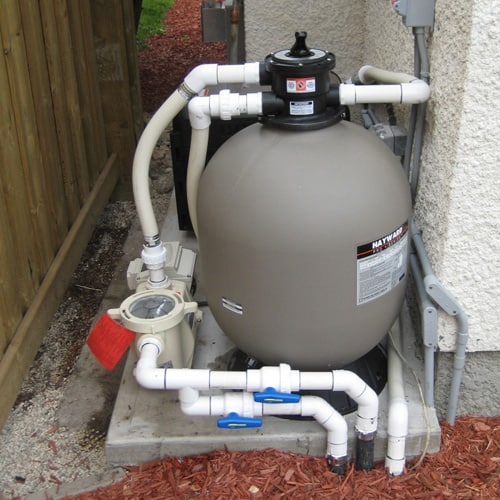
pump + sand filter + program selection valve
How long should filtration work? To obtain the best results, the system must always be left in operation (non-stop) day and night 24 hours a day; while to save energy it can be switched off at night and switched on only during the day when there is more external dirt entering the pool and when there is more radiation and consequent photosynthesis, in order to limit the proliferation of algae as much as possible.
In case of intense use (many swimmers) or due to the presence of natural phenomena (rain, wind, hail, etc.), conditions that can pollute the water with pollen, leaves, scraps of skin and other organic elements, etc. it is necessary to increase the filtration time and switch to the non-stop one.
ATTENTION VERY IMPORTANT: Remember to descale the sand filter at least once a year and to replace the whole sand every 4-5 years, as the sand clotted in blocks bound by limestone or too smooth by the mechanical action of water under pressure over time, retains much less dirt, losing effectiveness.
2. HOW TO TREAT THE POOL:
In addition to filtration, to obtain the best comfort and maximum safety, the pool water must be constantly checked, balanced and disinfected and before each treatment it is essential to analyze the water to know precisely the action to be performed.
pH: the neutral pH emphasizes the effectiveness of the treatment, ideally it should be between 7,2 and 7,4. An unbalanced pH in addition to reducing the effects of disinfection can cause irritation to the skin and eyes, increase the development and growth of algae as well as damage the system.
It is therefore essential to check the pH every 2/3 days and if it is too low it must be increased, while if it is too high it must be lowered. A balanced pH value prevents swimmers from unpleasant health problems.
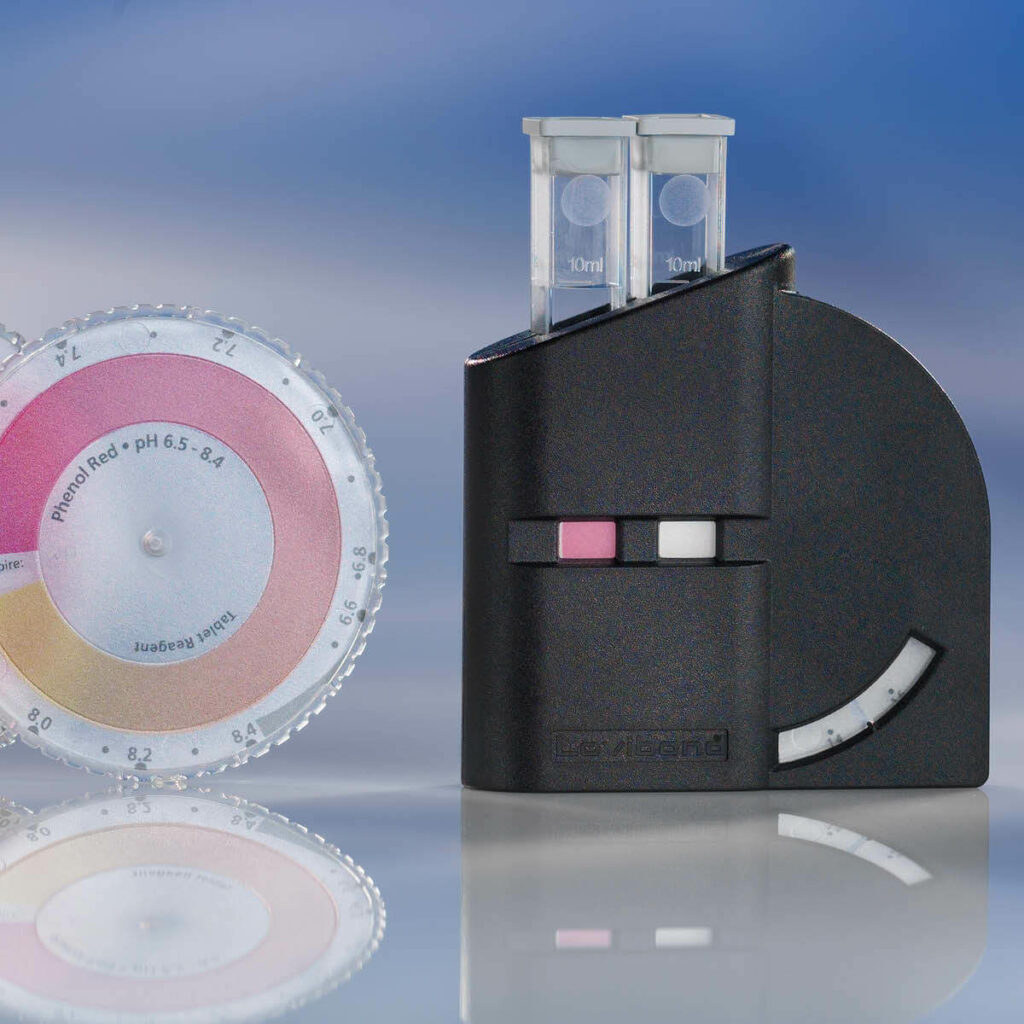
for water control
TAC and TH: they correspond to the concentration of minerals dissolved in the water; The TAC (full alkalimetric title) corresponds to the alkalinity of the water, i.e. the content of carbonate and bicarbonate ions, which ideally should be between 10° and 25°. The TH (hydrometric title) indicates the hardness of the water or the limestone content and must be between 20° and 25°, in traditional chemical disinfectant systems only the TAC rate can be adjusted.
Water disinfection: The disinfectant eliminates bacteria from the water and fights the appearance of algae to ensure a healthy swim. The most commonly used is liquid chlorine or in tablets or obtained from salt by electrolysis (from sodium chloride and potassium chloride). Its greater distribution is essentially due to the low purchase cost, but there are also other chemical disinfectants, such as bromine which is also of low cost.
In addition to liquid and solid chemical compounds, there are also two modern technologies pure ozone and UV rays.
Pure ozone also known as “active oxygen” is very effective not only against bacteria but also against many organic and inorganic compounds, and is also extremely effective against algae (pure ozone is widely used in spas). In addition to this, by using a pure ozone system, a substantial reduction in limestone is also obtained, which is converted up to 60% into aragonite with respect to the concentration present, making the water softer and more flowing to the touch, less aggressive for the system and the tank, allowing an easy removal during system filtration and rinsing.
UV rays perform the disinfectant work well but, unfortunately, they have no disinfectant residue over time and also have a reduced duration and a very high maintenance cost.
Water color: The main causes of the greenish color of the pool water can be of two types; presence of metals and presence of algae.
In the presence of metals, the coloring occurs mainly by filling the pool with well water. The iron and manganese salts often present in high doses oxidize due to the effect of disinfectants with colors ranging from green to brown.
In the presence of algae, the color usually occurs due to insufficient or total lack of disinfectant, too high pH, or too high concentration of cyanuric acid. However, algae can develop even in conditions of optimal disinfection, in case of high temperatures and high influx of swimmers.
If you are NOT using pure ozone as a disinfectant! To eliminate green water caused by metals or due to proximity to wooded areas or cultivated fields, it is necessary to take action in this way:
Very cloudy water: we recommend filling the pool up to the edge, adjusting the pH to 7,2, putting the filtration in recirculation only, adding flocculant according to the dosage of the product and after its complete mixing with water (if the pump installed is correct it will take 20 minutes) stop the pump / filtration and leave it to act for 12 hours, then suck the mud from the bottom and drain it directly without passing it through the filter. At the end of the operation, adjust the pH between 7,2 and 7,4 and restore normal filtration, finally for well water add a sequestering agent for metals.
Slightly cloudy water: adjust the pH between 7,2 and 7,4 and add flocculant tablets in the skimmers or in the drains of the overflow channels, keeping the filter pressure controlled and constantly backwashing. When the water becomes clear again, add a metal sequestering agent for well water only.
If you DO NOT use pure ozone as a disinfectant to keep the water clear and transparent!
With any other disinfection system, an anti-algae product is always essential, a compound that pierces the membrane of the algae allowing the disinfectant to attack and destroy them. The composition of the anti-algae is: Polyquaternary long-chain ammonium salts with a concentration from 5 to 15%. The typical dosage is 20-30 gr/m³ to be dispersed directly in the tank.
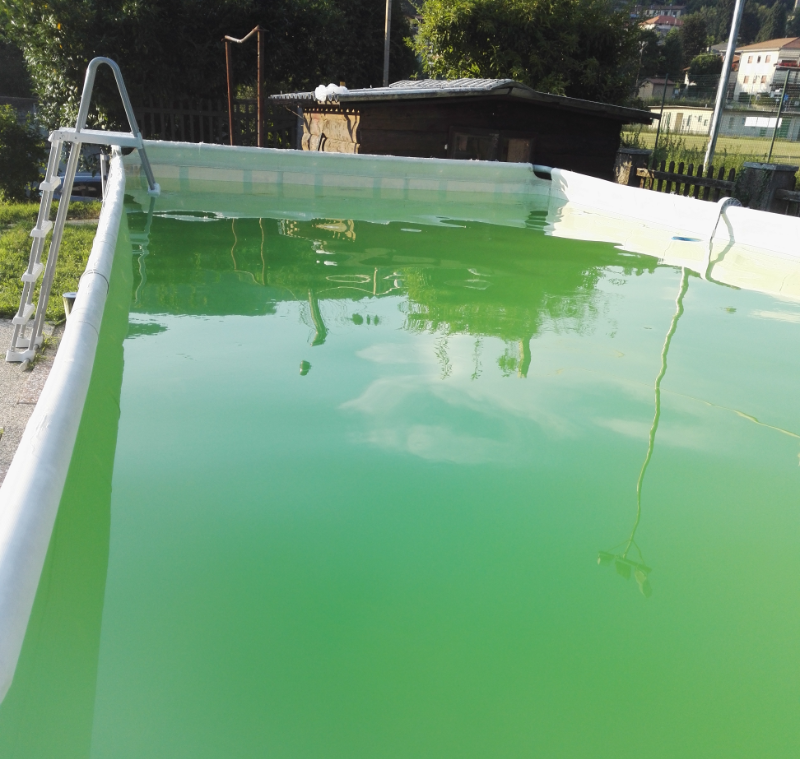
If pure ozone IS used as a disinfectant: Everything described above to remove algae or the flocculating treatment is not needed, as the great oxidizing power of pure ozone autonomously perforates the algae membrane attacking them, destroying them and bleaching them until making them suspended dust, easily removable from the filtering system.
But what to do in case of damage to the disinfection system?
In case of damage to the pure ozone disinfection system or to any other type with automatic dosing: plug the lack of automation with slow-dissolving chlorine tablets (preferably trichloro). The slow and gradual dissolution guarantees the maintenance of the concentration for several days, the rate must necessarily be monitored and must be between 1,5 and 2 mg/l. In support of chlorination to contain the formation of algae, it is good to dose a concentrated anti-algae product weekly (times and doses described on the product), without forgetting the flocculation to clot and deposit debris and algae on the bottom of the tank, making their removal easier.
HOW TO CLEAN THE POOL:
Most of the waste is collected by the filter system, but there may still be some impurities that need to be removed.
Manually every day: Collect leaves, insects and other debris from the surface of the water using a surface landing net.
Empty the basket filters in the skimmers, clean the bottom and walls of the pool with the manual suction broom connected to the pool suction system.
Automatic system that makes life easier: The pool robot that autonomously cleans every internal surface of the pool (bottom and walls), remember to keep it clean by eliminating the material retained by the filters inside it.
The maintenance of the pool takes only about thirty minutes a week with simple corrective actions that avoid having to often carry out an important and very expensive healing action.
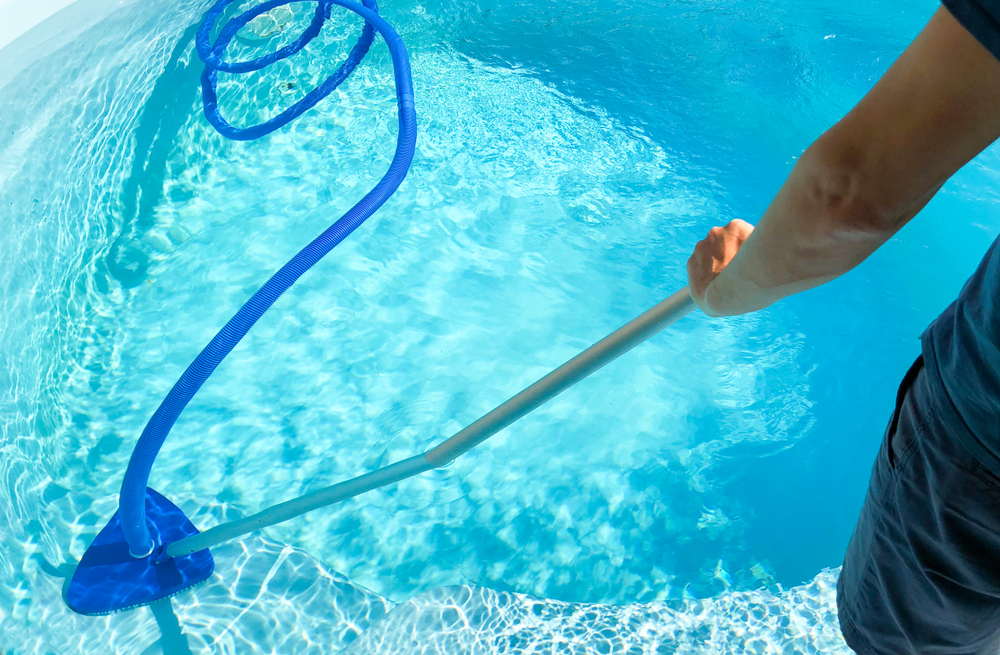
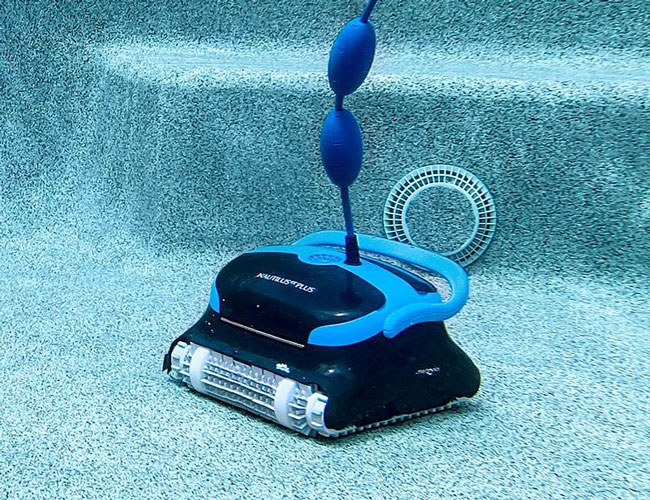
Salt Pool – The novelty or fashion of the moment:
What is the salt treatment of swimming pool?
Salt = Sodium Chloride
Essentially, the chlorine necessary for disinfection is obtained by electrolysis from the salt dissolved in the pool water, by means of an electronic device that transforms it precisely into chlorine and caustic soda.
If you really want to use salt, remember that it is not a perpetual cycle and that it is often necessary to check the salinity level by compensating for losses due to evaporation, water replenishment, rinsing, etc.
Don’t be fooled by so many promises and words, your health is at stake!
Pay close attention to your choice and remember that it is always a chlorine disinfection, an element that in the pool tub, acting against bacteria, debris and organic elements, transforms into dangerous CHLORAMINES, an irritating and toxic chemical element recognized globally as a carcinogen for all living beings.
Some of the typical problems of a non-disinfected pool:
LEGIONELLA, Lung infection caused by the bacterium Legionella pneumophila. It is present in natural and artificial aquatic environments such as: spring and thermal waters, rivers, lakes, muds, etc. from these it reaches city pipes and water systems of buildings, tanks, pipes, fountains, swimming pools, SPAs that act as amplifiers creating a potential risk situation for human health. The most predisposed are all over 50, smokers, people with chronic diseases and immunosuppressed. The death rate related to Legionella infection can range from 40 to 80 percent of intoxicated people.
Pure ozone kills the LEGIONELLA bacterium without particular operations or high concentrations.
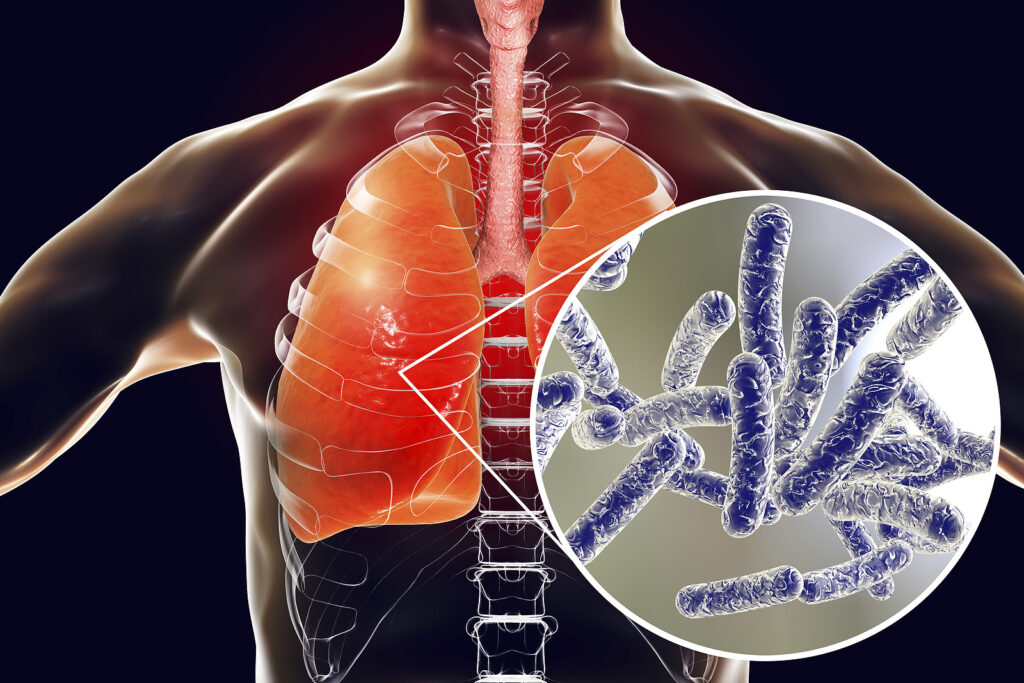
CRYPTOSPORIDIUM, Cryptosporidia are protozoa of the coccidia group and replicate in the epithelial cells of the small intestine of vertebrates and after ingestion causing disease. Water from public and residential swimming pools, whirlpools, water parks, lakes or streams is a vehicle of greater distribution. The disease present worldwide is responsible for 8% of the forms of diarrheal disease. In Europe, 444 cryptosporidiosis outbreaks were reported in 2017 leading to 7465 cases. The number of reported outbreaks has increased by an average of 13% per year. They are resistant to harsh environments including those containing chlorine at levels recommended in public and swimming pool water treatment systems.
Pure ozone kills the CRYPTOSPORIDIUM protozoan without particular operations or high concentrations.
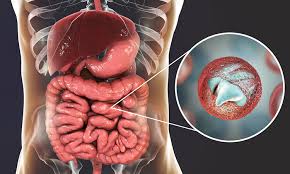
AMOEBA Amoebiasis is an infectious disease caused by the protozoan Entamoeba histolytica. The infection is transmitted via the fecal-oral route through direct contact with contaminated faeces, water and food. It can affect anyone and represents a worldwide health problem as a major cause of severe diarrhea. According to the World Health Organization (WHO), amoebiasis causes over 50.000 deaths every year and is the third leading cause of intestinal diseases after giardiasis and campylobacteriosis. Symptoms range from simple abdominal pain and cramps to severe appendicitis-like pain. The infection can escalate, causing colon ulcers and bleeding (amoebic dysentery). The protozoan can leave the intestine and infect other organs, particularly the liver, lungs and the central nervous system.
Pure ozone kills the AMOEBA protozoan without particular operations or high concentrations.
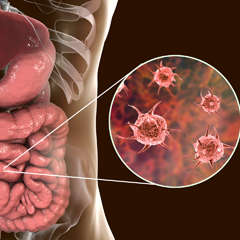
PSEUDOMONAS, Pseudomonas is a genus of Gram-negative bacterium found predominantly in humid environments and waters. The most common infection is caused by Pseudomonas Aeruginosa and generally, the parts of the body where it occurs are: the ear with the appearance of hearing difficulties pain or otitis, the dermis through redness, rash folliculitis, the eyes that may result swollen and have ulcerated cornea, joints for example in the spine, bacterial infection of the blood or urinary tract with fever and severe sepsis, respiratory system for example pneumonia, gastrointestinal disturbances with diarrhea.
Pure ozone kills the PSEUDOMONAS bacteria without particular operations or high concentrations.
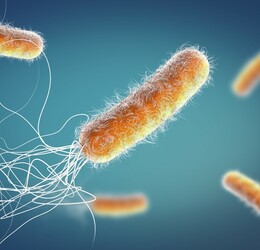
E. coli, The name Escherichia coli (E. coli) defines a group of Gram-negative bacteria that can cause infections of: Digestive system (causes gastroenteritis), Urinary tract (bladder infection in women), Intestinal infections by drinking contaminated water in pool. Cause diarrhea (sometimes severe or bleeding and abdominal pain), Prostate infection (prostatitis), Gallbladder infection, Wound infections (including surgical), Pressure ulcer infections, Foot infections in diabetics, Pneumonia, Neonatal meningitis, Infections of the blood and if the intestine is torn due to trauma or inflammatory bowel disease, the bacteria can spread to adjacent anatomical structures that have no defenses, or enter the bloodstream. It causes traveler’s diarrhea (abdominal cramps and watery diarrhea, and sometimes nausea and vomiting) occurs by consuming inadequately purified water or washing foods with it. Some strains produce toxins that damage the colon (colitis) by drinking improperly disinfected water in swimming pools or aquatic facilities. Strain O157: H7 can cause serious problems (haemolytic uremic syndrome) red blood cells are destroyed and kidney failure occurs, which causes a buildup of toxic substances in the blood (uremia) and can cause death regardless of whether a hemolytic-uremic syndrome develops or not.
Pure ozone kills the E. coli bacteria without particular operations or high concentrations.
